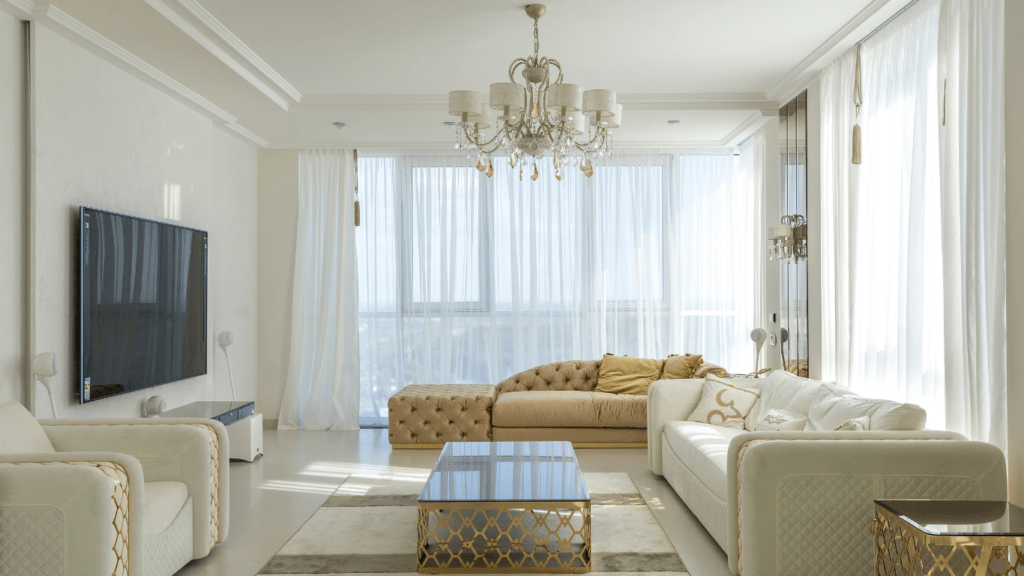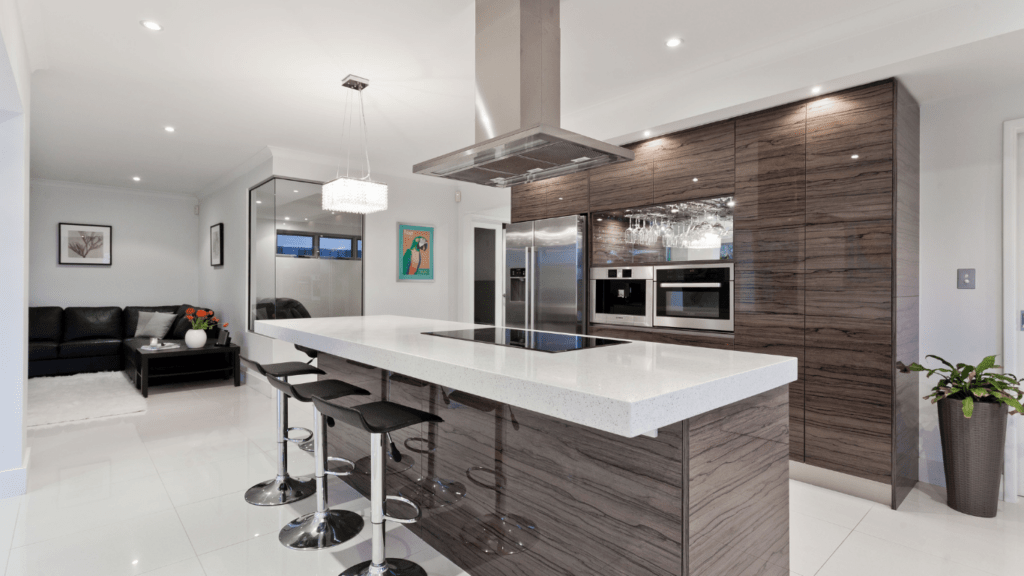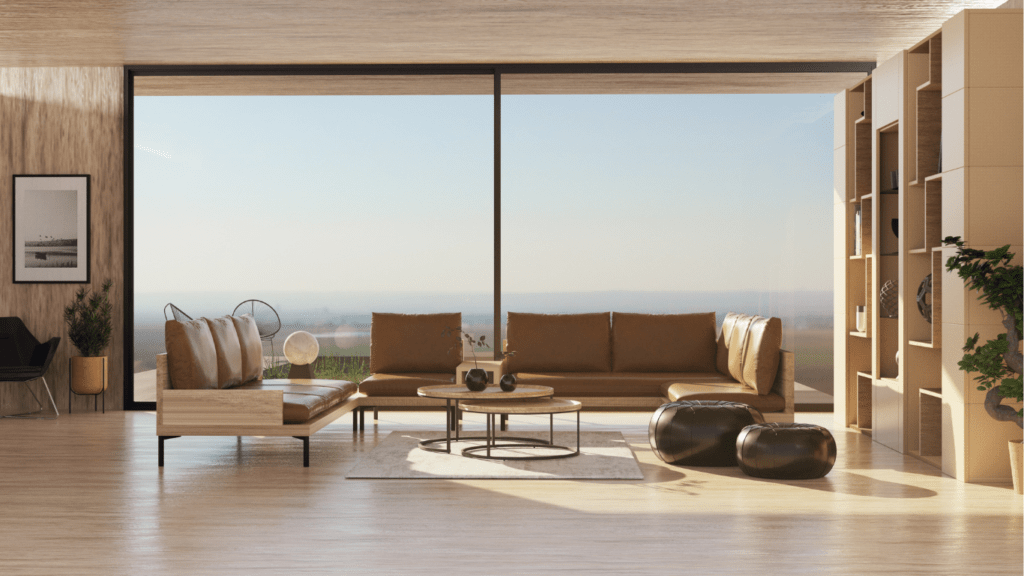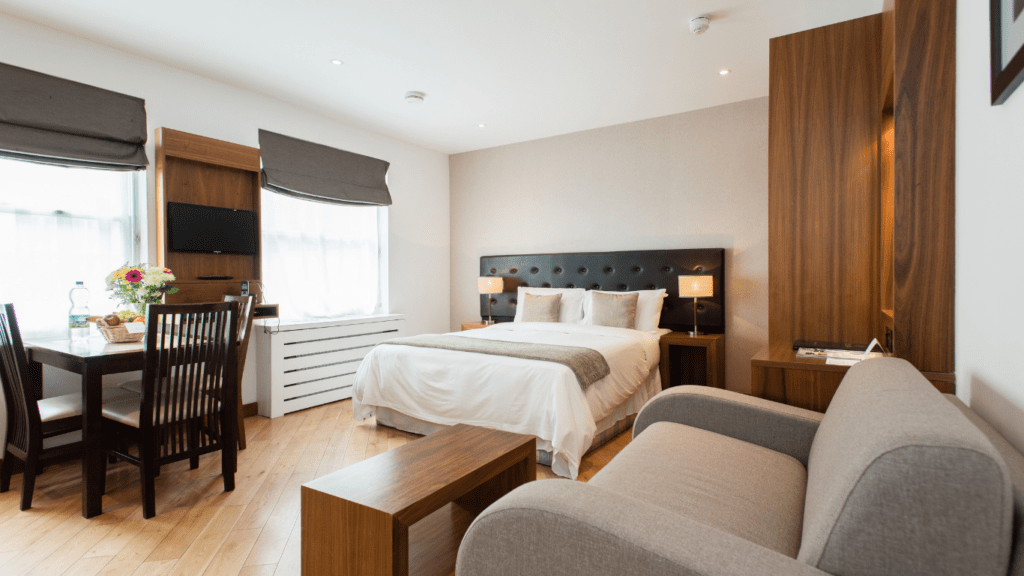Understanding Open Floor Plans
Open floor plans combine the kitchen, living, and dining areas into one large, open space. This design promotes social interaction and makes a home feel larger. However, this layout can pose challenges in creating distinct areas without walls.
The openness requires thoughtful furniture arrangement to define functional zones. For instance, a sofa can delineate the living area from the kitchen. Using area rugs to mark different spaces is also effective. It’s essential to balance the openness with defined sections to maintain both the spacious feel and functionality.
Open floor plans rely on seamless transitions between areas. Cohesive design elements, like consistent color schemes and complementary furniture styles, ensure unity. For example, using the same flooring throughout helps maintain visual flow. Choosing furniture that matches or complements pieces in adjacent areas reinforces continuity and avoids a disjointed look.
Letting natural light penetrate through large windows enhances the open feel. Keep window treatments minimal to maximize this effect. In spaces with fewer windows, strategically place mirrors to reflect light and create the illusion of more space.
Understanding how to navigate the challenges of open floor plans allows for a well-designed and functional living environment. By considering factors like zoning with furniture and maintaining a cohesive design, it’s possible to maximize both style and practicality in an open-concept space.
Key Principles of Furniture Placement
Optimal furniture placement in open floor plans creates a unified and functional layout. Follow these principles to achieve a seamless design.
Define Zones Clearly
Furniture can delineate various functional areas in open layouts. For example, a sofa or sectional can set apart the living room, while a dining table can demarcate the dining area. Use area rugs to emphasize distinct zones. They visually anchor the space, preventing it from looking chaotic. Storage units, like bookcases or consoles, can further enhance these divisions without disrupting the open feel.
Maintain Traffic Flow
Clear pathways enable ease of movement through the space. Arrange furniture to guide traffic naturally. For instance, place seating and tables to avoid obstructing walkways between areas. Ensure there’s at least 3 feet (0.91 meters) of clearance in high-traffic zones. Strategic placement not only facilitates movement but also retains an open and airy ambiance.
Balance Scale and Proportion
Furniture size should complement the room’s dimensions. For large open spaces, choose more substantial pieces like oversized sofas or large coffee tables. In smaller areas, opt for compact furniture to avoid overwhelming the space. Mixing different furniture heights can add visual interest without disrupting scale. For example, pairing a low sofa with tall bookshelves creates a balanced look.
Living Room Layout Ideas
Arranging furniture in an open floor plan requires strategic planning. Use these living room layout ideas to create a harmonious environment.
Creating Conversation Areas
Position furniture to facilitate conversation. For example, place a sofa facing two armchairs across a coffee table to encourage social interaction. Ensure there’s enough space for easy movement, typically at least 3 feet between pieces. Use area rugs to define these spaces clearly, such as placing one under the seating arrangement to anchor the conversation area. Combining different seating types, like a loveseat and a couple of chairs, adds variety and comfort to the space.
Incorporating Multi-functional Furniture
- Choose pieces that serve multiple purposes to maximize functionality.
- Use an ottoman that doubles as a coffee table or extra seating.
- Incorporate storage solutions within furniture, like a sofa with built-in drawers, to keep the space tidy.
- Opt for extendable dining tables to accommodate more guests when needed.
- Utilize room dividers with shelving to create separation and additional storage without disrupting the open feel.
Dining Area Considerations

Defining the dining area in an open floor plan demands strategic furniture placement and design consistency. Here are key tips to create a harmonious dining space that complements the overall layout.
Selecting the Right Table
The dining table serves as the focal point, so its selection is crucial. Opt for a table size that suits your space and accommodates the typical number of diners. Round tables, for example, encourage conversation and work well in smaller spaces, while rectangular tables fit better in elongated areas. Choose a table style that harmonizes with nearby furniture for seamless design continuity.
Utilizing Rugs for Definition
Using rugs helps demarcate the dining area, adding visual definition and texture. Select a rug that extends at least 24 inches beyond the table edges to ensure chairs remain on the rug when pulled out. This creates a bordered effect, clearly distinguishing the dining zone within the open layout. Matching the rug’s color and pattern with the dining chairs and table reinforces the cohesive design.
By following these guidelines, you can create a well-defined yet integrated dining area in your open floor plan, enhancing both aesthetics and functionality.
Integrating the Kitchen Space
Integrating the kitchen into an open floor plan creates a smooth, cohesive environment. Focus on strategic furniture placement and design elements to maintain functionality and visual flow.
Utilizing Islands and Peninsulas
Kitchen islands and peninsulas offer flexible space solutions. Use an island to create a natural boundary between the kitchen and living areas. Select an island with built-in storage and seating to increase functionality. Place barstools on one side of the island to face the living area, encouraging interaction. In smaller spaces, opt for a peninsula, which extends from the main counter, providing additional workspace and helping delineate the kitchen zone.
Open Shelving and Storage Solutions
Open shelving increases the kitchen’s visual cohesion with the rest of the open floor plan. Use shelves to display your dishes, glassware, or decorative items, blending style and practicality. Consider floating shelves for a sleek, modern look. To maintain visual order, keep the displayed items coordinated in color and design. Additionally, incorporate storage solutions like:
- pull-out drawers
- cabinets
- baskets in lower cabinetry
to keep countertops clutter-free, enhancing the seamless kitchen integration.
Tips for Seamless Design
When arranging furniture in an open floor plan, consider design elements that create harmony. Focus on elements like coordinating color schemes and effective lighting to enhance visual flow.
Coordinating Color Schemes
Use cohesive color schemes to unify different zones within the open floor plan. Choose a primary palette and incorporate complementary shades across furniture, rugs, and accessories. This approach avoids visual clutter.
Consider using neutral tones for large pieces like sofas and dining tables, then add accents with bolder colors. For example, select beige or gray for the primary couch, and introduce vibrant throw pillows or artwork in shades of blue or green. This method maintains a balanced aesthetic.
Using Lighting Effectively
Strategically utilize lighting to define areas and enhance the open feel of the space. Combine natural light with artificial sources for optimal results. Place floor lamps and table lamps to illuminate seating areas, and use pendant lights or chandeliers above dining tables.
Install dimmable lights for versatility, allowing you to adjust brightness based on activities. Integrated lighting in shelves or under cabinets can add depth and highlight specific zones, enhancing the overall ambiance.



 Wesleyero McGill – Founder & CEO
Wesleyero McGill is the visionary behind Castle Shelf House, bringing over a decade of experience in home renovation and design. His passion for creating beautiful, functional spaces has led him to establish this platform, where he shares the latest trends in interior and exterior design. As Founder and CEO, Wesleyero is dedicated to offering expert advice on furniture placement, home styling, and renovation, helping homeowners transform their spaces with ease and confidence.
Wesleyero McGill – Founder & CEO
Wesleyero McGill is the visionary behind Castle Shelf House, bringing over a decade of experience in home renovation and design. His passion for creating beautiful, functional spaces has led him to establish this platform, where he shares the latest trends in interior and exterior design. As Founder and CEO, Wesleyero is dedicated to offering expert advice on furniture placement, home styling, and renovation, helping homeowners transform their spaces with ease and confidence.
